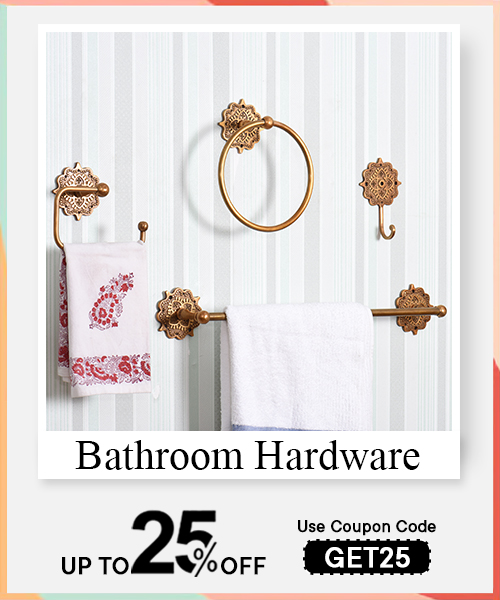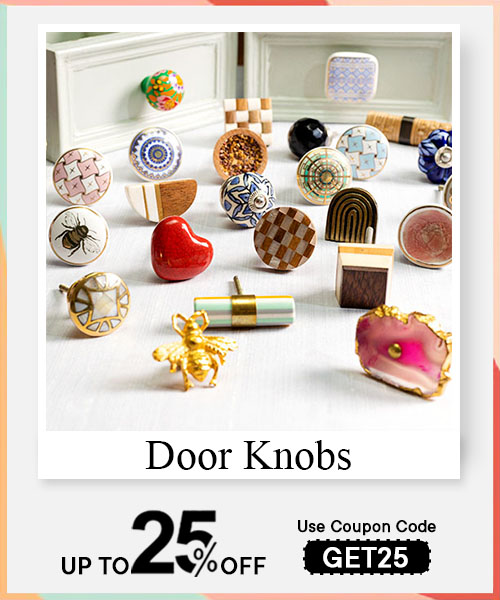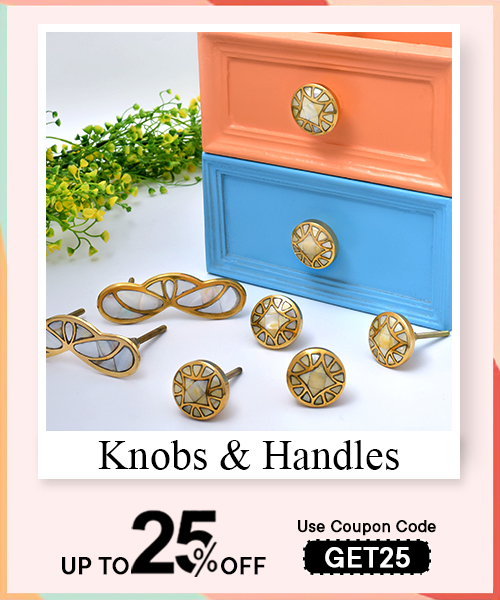Aesthetic artwork refers to visual creations that focus on beauty and pleasing visual elements. It emphasizes harmony, balance, and color to create an experience that is visually enjoyable. Aesthetic pieces often evoke emotions or reactions from the viewer, engaging them in a sensory experience. The term "aesthetic" is about pleasing the eye and providing a sense of satisfaction through the arrangement of shapes, colors, and forms. Such artwork can be abstract, realistic, or symbolic, and its primary aim is to appeal to the viewer's sense of beauty and style, whether in the form of landscapes, portraits, or even conceptual representations.
Creating aesthetic artwork at home can be a fun and relaxing activity. Start by selecting a subject or theme that inspires you, such as nature, geometric shapes, or abstract designs. Use colors that complement each other and create harmony. If you're new to this style, start with simple shapes and patterns, experimenting with brush strokes or textures. Consider using different mediums like acrylics, watercolors, or markers for varied effects. It's also important to create a clean, clutter-free space where you can focus and allow creativity to flow. By incorporating elements of balance and proportion, you can create pieces that are visually pleasing and personal.
To create aesthetic artwork, the materials you choose depend on the style and medium you prefer. Common supplies include:
- Acrylic paints, watercolors, brushes, pencils, and canvas or paper
- Markers or pens for finer details
- Modeling paste or sponges for textured effects
- Fabric, chalk pastels, and charcoal for additional texture
- Color palettes with complementary shades to maintain harmony
Choosing the right tools depends on the kind of effect you want to achieve and the style of art you wish to create.
Read More : World Art Day
The key difference between aesthetic artwork and other styles is its focus on beauty and visual appeal. While other art styles might prioritize narrative, emotion, or social commentary, aesthetic artwork emphasizes creating a harmonious and pleasing visual experience. Artists often focus on color balance, symmetry, and proportions to ensure the artwork is visually satisfying. This style may include minimalist designs, abstract concepts, or natural landscapes, but the overarching goal is to evoke a sense of calm and beauty rather than convey a complex message or tell a story.
Yes, aesthetic artwork can definitely be abstract. Abstract art focuses on shapes, colors, and patterns rather than representational images. The goal is to create a visual experience that is pleasing and evocative, even if the artwork doesn’t depict real-world objects. Many abstract artists use bold colors and dynamic lines to evoke emotions or simply create something visually striking. These types of artworks can still maintain aesthetic qualities, such as balance and harmony, even without realistic forms. Aesthetic abstract pieces are designed to be enjoyed purely for their visual and sensory qualities.
Choosing colors for aesthetic artwork requires an understanding of color harmony. Consider the following approaches:
- Use complementary colors (opposites on the color wheel) like blue and orange or red and green for vibrant contrast.
- Opt for analogous colors (next to each other on the wheel) like green, yellow, and orange for a calming effect.
- Try monochromatic color schemes (variations of one color) for a subtle and cohesive feel.
Experiment with different combinations to see what evokes the desired emotions or visual appeal.
Symmetry plays a crucial role in aesthetic artwork because it contributes to balance and visual harmony. A well-balanced piece is often more visually appealing and can evoke a sense of order. Symmetry can be achieved by arranging elements evenly across the canvas or using mirror-like patterns. However, symmetry does not always mean identical shapes on both sides; it can involve asymmetrical balance, where elements are of different sizes but are still arranged in a way that feels balanced. In aesthetic artwork, symmetry helps create an organized, satisfying visual experience.
Yes, there is often a strong connection between aesthetic artwork and nature. Many artists draw inspiration from the natural world, creating artworks that highlight its beauty, such as landscapes, flowers, and natural forms. Nature is full of patterns, colors, and shapes that can inspire harmony in an artwork. Whether it’s the vibrant colors of a sunset or the delicate balance of a flower, nature provides endless possibilities for creating aesthetically pleasing designs. Artists often capture the peaceful and serene qualities of nature to create works that resonate with viewers on a deeper emotional level.
Texture plays a vital role in creating depth and interest in aesthetic artwork. By incorporating different textures, artists can add a tactile quality that enhances the visual experience. For example:
- Rough textures contrast with smooth areas for variety and complexity.
- Impasto technique applies thick layers of paint for texture.
- Mixed media like fabric or sand can add physical dimension.
Texture adds a dynamic quality to artwork, making it feel more engaging and visually appealing.
Yes, aesthetic artwork is widely used in interior design to create ambiance and enhance the overall aesthetic of a space. Whether it's a large canvas or small decorative pieces, artwork can add color, texture, and personality to a room. Aesthetic pieces can help set the mood, from calm and serene landscapes to bold and striking abstracts. By choosing artwork that complements the color scheme and style of your space, you can create a more inviting and visually harmonious environment. Aesthetic artwork can also serve as a focal point, drawing attention and creating a conversation piece.
Several techniques can help achieve aesthetic effects in your artwork, including:
- Layering colors for depth and dimension
- Using gradients for smooth color transitions
- Minimalist designs to emphasize balance and form
- Experimenting with dry brushing, sponging, or scraping for texture
- Incorporating geometric patterns for rhythm
- Using light and shadow to enhance visual appeal

To enhance visual appeal, consider the following tips:
- Focus on composition and balance.
- Use effective color contrasts.
- Keep the design simple to avoid overwhelming the viewer.
- Incorporate patterns, textures, and lighting effects.
Aesthetic artwork focuses on beauty, harmony, and emotional response, while decorative art often serves a functional purpose alongside being visually pleasing. While both enhance spaces, aesthetic artwork prioritizes artistic expression, whereas decorative art integrates into practical objects like furniture or ceramics.
To determine if your artwork is aesthetically pleasing, consider its composition and visual balance. Step back and observe how the elements of the piece interact with each other. Does it feel harmonious, or is there a sense of imbalance? Also, assess the use of color—are the shades complementary or do they clash? The textures and shapes should flow together in a way that is visually satisfying. If the artwork gives you a sense of calm, excitement, or intrigue, it is likely achieving its goal. Trust your instincts and get feedback from others to see if the piece resonates emotionally.
Yes, aesthetic artwork can absolutely be created digitally. With digital art tools such as graphic design software (e.g., Photoshop, Illustrator, or Procreate), artists can design visually appealing compositions that follow the same principles of balance, color harmony, and texture used in traditional artwork. Digital tools offer the advantage of experimenting with different techniques, colors, and effects without the need for physical materials. Moreover, digital artwork allows for easy adjustments and layering, making it easier to refine designs. Artists can also create stunning aesthetic works, from minimalistic illustrations to detailed digital landscapes, depending on their creative preferences.
Composition plays a significant role in creating visual harmony in aesthetic artwork. It refers to the arrangement of elements within the frame, ensuring that all parts of the piece work together to create balance and order. A well-composed artwork leads the viewer’s eye smoothly across the design, preventing any areas from feeling too crowded or empty. Techniques like the rule of thirds, where the artwork is divided into a 3x3 grid, can help position focal points and guide the viewer’s attention. Good composition contributes to the overall aesthetic experience, making the artwork feel cohesive and pleasing to the eye.
Read More : Digital Painting: A Beginner's Guide to Tools, Techniques, and Software
Creating aesthetic artwork can be a deeply rewarding and therapeutic experience. It provides a creative outlet that allows you to express emotions and ideas visually. Working on aesthetic designs can also promote relaxation, as the focus on colors, shapes, and textures can help reduce stress and anxiety. Additionally, creating visually pleasing artwork can boost self-confidence and offer a sense of accomplishment. It also enhances cognitive skills such as problem-solving and attention to detail. Lastly, producing aesthetic works allows you to bring beauty into your space, making it more inspiring and enjoyable to live or work in.
Color theory is essential in creating aesthetic artwork because it helps artists choose and combine colors that are visually appealing and evoke the right emotions. Understanding the relationships between colors—whether they are complementary, analogous, or monochromatic—allows artists to create harmonious color schemes. For example, using complementary colors (like blue and orange) creates contrast, while analogous colors (like green, blue, and purple) create a soothing, unified effect. The use of warm or cool colors also influences the mood of the artwork. Mastering color theory helps enhance the overall aesthetic of the artwork, making it more balanced and impactful.
Light plays a crucial role in aesthetic artwork by affecting the overall mood and atmosphere of the piece. The way light interacts with colors and textures can create depth, highlight important elements, and add a sense of realism. Natural light often enhances the vibrancy of colors, while artificial light can create dramatic shadows or soft glows. For example, the play of light and shadow in a landscape can give the scene more dimension and bring it to life. In abstract or minimalist artwork, the use of light can direct the viewer’s attention to specific focal points, making the composition more dynamic and interesting.
Minimalism and aesthetic artwork often go hand-in-hand, as both focus on simplicity and beauty. Minimalist art strips down unnecessary details, focusing on clean lines, a limited color palette, and geometric shapes to achieve elegance and clarity. The idea is that less is more, and the beauty of the piece lies in its simplicity. In aesthetic artwork, minimalism can be used to emphasize balance and harmony, creating a calming and peaceful effect. By using fewer elements, minimalist pieces often allow for more space, giving the artwork room to breathe and the viewer a chance to appreciate each detail.
While aesthetic artwork is often focused on beauty and visual appeal, it can still tell a story. The story might not be literal, but rather conveyed through symbols, colors, and composition. For example, a serene landscape might evoke a sense of calm or nostalgia, while an abstract piece could express emotions like joy or sorrow through the use of shapes and color contrasts. Artists can choose to represent themes, moods, or even personal experiences in a subtle way, allowing the viewer to interpret the piece in their own way. In this way, aesthetic artwork can evoke deeper meanings beyond its outward appearance.
Negative space refers to the empty areas around and between the main elements of a piece. It plays an important role in aesthetic artwork by balancing the composition and allowing the viewer’s eye to rest. Negative space can help highlight focal points, give a sense of openness, and create harmony within the design. In minimalist or modern artwork, negative space is often used intentionally to create emphasis on specific objects or shapes. Rather than leaving areas of the artwork completely blank, the use of negative space makes the piece feel more open and inviting, contributing to its overall aesthetic quality.
Yes, aesthetic artwork can be created on a variety of surfaces, depending on the artist’s preference and the desired outcome. While traditional artwork is often done on canvas or paper, other surfaces like wood, fabric, metal, or even glass can be used to create aesthetically pleasing pieces. Different surfaces offer unique textures and challenges that can affect how the materials (such as paint or ink) are applied and how the final result looks. Artists often experiment with different mediums and surfaces to achieve diverse effects, adding more creativity and depth to their work.
Fine art typically refers to traditional artistic disciplines such as painting, sculpture, drawing, and printmaking, created with a focus on skill, creativity, and artistic expression. Aesthetic artwork, on the other hand, refers to visual art that is primarily focused on beauty and visual harmony. While fine art can have emotional, cultural, or political messages, aesthetic artwork’s primary goal is often to evoke a sensory or emotional response through pleasing visuals, balance, and design. However, the lines between the two can overlap, as both strive to create pieces that are visually impactful and thought-provoking.
Yes, aesthetic artwork is often used in branding and marketing to create a strong visual identity. Many companies rely on visually appealing designs to connect with customers and communicate their brand message. Aesthetic elements, such as color schemes, logos, and promotional materials, play a crucial role in creating a memorable and attractive brand. By using artwork that resonates with the target audience’s tastes and values, brands can foster a connection and enhance customer loyalty. Whether it's a sleek and minimalist design or a vibrant, dynamic look, aesthetic elements help define the feel of the brand.
Aesthetic artwork is considered successful when it engages the viewer’s senses and emotions. It should evoke a response, whether that’s feelings of peace, joy, intrigue, or inspiration. A successful piece will have good composition, balanced color schemes, and clear focus areas that guide the viewer’s eye. However, the true success of aesthetic artwork can also depend on the artist’s intention. If the piece communicates the desired visual appeal and resonates with the audience in some way, it is likely successful. Ultimately, success in aesthetic art is subjective, but creating something that is visually harmonious and emotionally engaging is the goal.
Incorporating texture into aesthetic artwork adds depth and visual interest. Texture can be achieved in various ways, depending on the medium used. For example, in traditional artwork, an artist might use thick brushstrokes, palette knives, or even layering techniques to create a tactile surface. In digital art, texture can be mimicked by adding patterns or using textured brushes in software like Photoshop or Procreate. Adding texture creates a dynamic feel in the artwork, making it more engaging for the viewer. It also enhances the overall aesthetic experience by offering a contrast to smooth or flat areas of the piece.
Proportion plays a crucial role in aesthetic artwork by ensuring that the elements within the composition relate to one another in a balanced way. Proportion refers to the size and scale of objects within the artwork, and it helps create harmony and unity. When the proportions are correct, the piece feels natural and pleasing to the eye. For example, in portraiture, getting the proportions of facial features right makes the figure more lifelike. In abstract works, proportion may be used creatively to evoke certain moods or emphasize specific elements, giving the artwork its visual appeal.
Several techniques can enhance the aesthetic appeal of artwork, depending on the artist’s style and medium. Some of the most common include:
- Use of color: Choosing complementary or analogous color schemes creates harmony and visual interest.
- Light and shadow: Properly applying light and shadow adds depth and dimension to the work.
- Balance and symmetry: Ensuring that the composition is well-balanced helps avoid chaotic or uncomfortable visuals.
- Texture: Adding texture with different brush techniques, tools, or digital effects creates a sense of depth and tactile quality.
- Contrast: The use of contrasting colors or shapes can make certain elements pop and draw attention to key focal points.
Each technique can enhance the overall look, making the artwork more captivating and visually harmonious.
Artists develop their unique aesthetic style through experimentation, practice, and personal expression. It involves exploring different mediums, techniques, and subject matter until they discover what resonates with them the most. Over time, they refine their skills and begin to develop signature methods for creating visual works that express their individual perspectives. Additionally, artists often draw inspiration from personal experiences, cultural influences, or nature, which shape their distinct style. Developing a unique aesthetic style requires patience and a willingness to experiment, but it leads to an artist’s recognizable body of work.
The context in which an artwork is created and viewed can significantly impact its aesthetic value. Context includes factors such as the artist’s background, cultural influences, and the era in which the work was produced. An artwork may have different meanings or aesthetic appeal depending on its historical context. For example, a piece created during a particular art movement may resonate differently for viewers familiar with the cultural and societal issues of that time. The setting in which the artwork is displayed—whether in a gallery, home, or public space—also influences how it is perceived. Understanding context can deepen one’s appreciation for the artwork.
Creating aesthetic artwork can come with several challenges. One common difficulty is achieving the right balance between elements such as color, texture, and composition. Overcrowding a piece with too many details or using conflicting colors can detract from its visual harmony. Another challenge is maintaining consistency in style and technique, especially for artists experimenting with new methods or materials. Additionally, it can be hard for some artists to know when to stop working on a piece, as they may feel compelled to keep adjusting it. Overcoming these challenges requires patience, practice, and a strong understanding of design principles.
While it is not necessary to follow strict rules to create aesthetic artwork, understanding basic design principles can help guide the creative process. Rules like the rule of thirds, balance, and contrast can be used as tools to create harmonious compositions. However, many artists choose to break or bend these "rules" to achieve their unique vision. Art is about self-expression, and the rules are not always rigid. In fact, challenging traditional norms can often lead to innovative and visually stunning works. Therefore, while it’s useful to learn these principles, creativity and intuition are just as important in the artistic process.
Emotions play a significant role in aesthetic artwork, as they can be both the inspiration and the message behind the piece. Artists often use their emotions to guide their choice of colors, shapes, and composition. For example, bold and fiery colors like red and orange might be used to express passion or anger, while soft blues and greens can convey calmness or serenity. The use of emotional expression in artwork allows viewers to connect with the piece on a personal level, creating a more engaging and thought-provoking experience. Ultimately, emotions are a powerful tool for making artwork visually and emotionally resonant.
Read More : Tanjore Painting: A Traditional Indian Art Form with Rich History and Cultural Significance
Aesthetic artwork has the potential to influence social change by raising awareness of important issues and inspiring people to think critically. Historically, art has been used as a powerful tool for social commentary, whether through political messages or the representation of marginalized groups. For example, works that address topics like inequality, environmental concerns, or human rights can spark discussions and encourage collective action. Aesthetically pleasing visuals can capture attention, making complex issues more accessible and emotionally impactful. Art’s ability to evoke empathy and connect people to social causes has proven to be an effective way to drive change in society.















